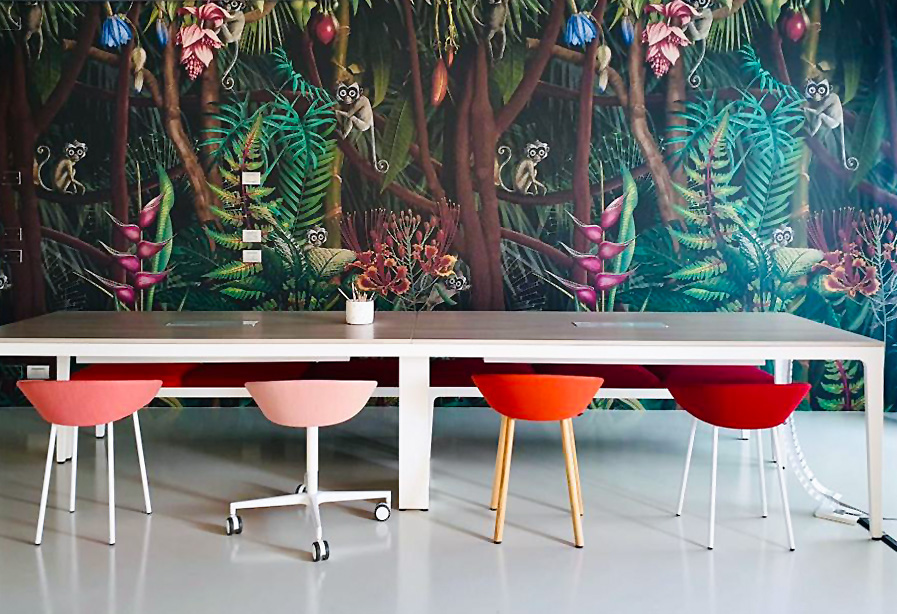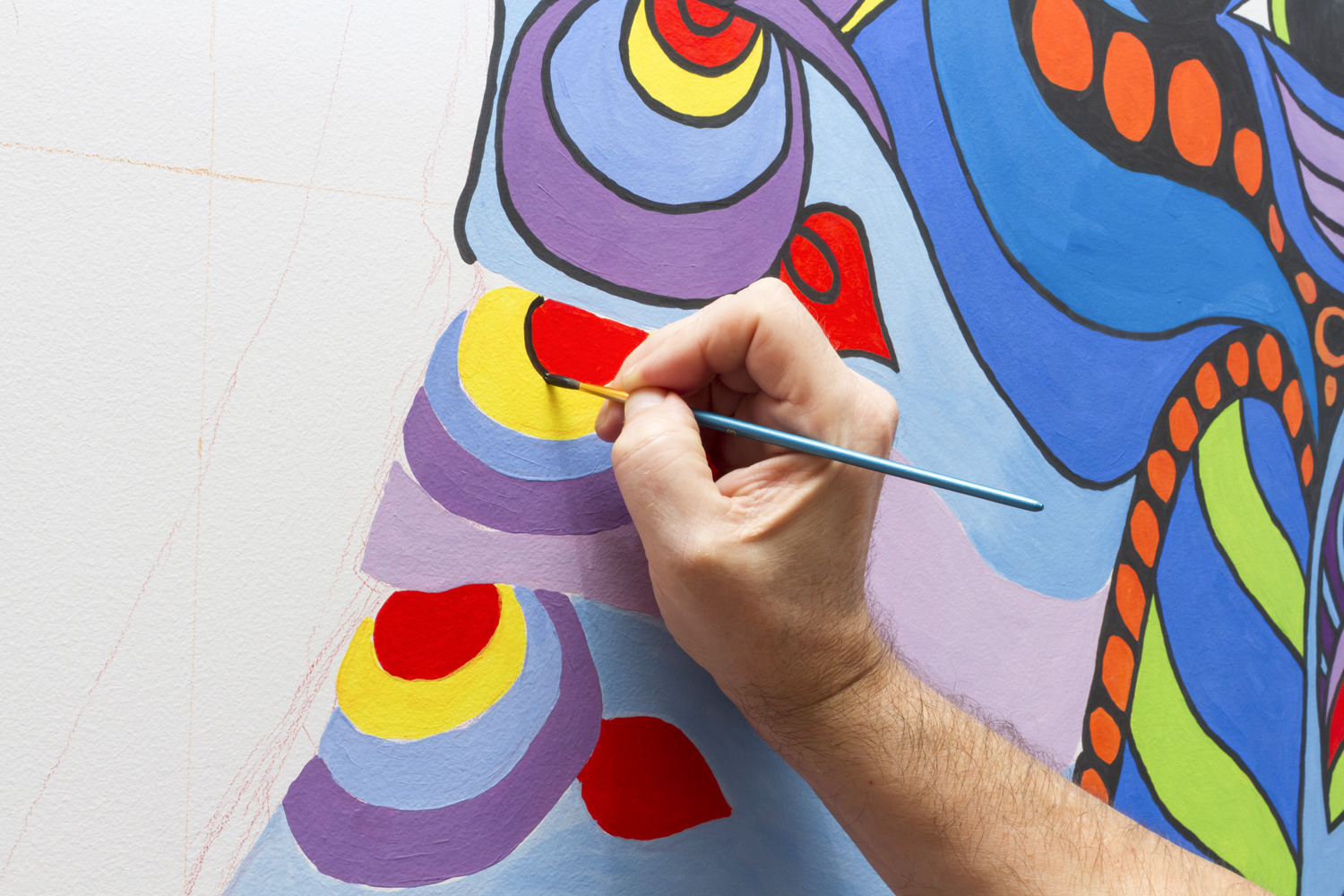The workplace is what now frames the greater part of our day and its atmosphere and design undeniably influence us hour after hour. It is no coincidence that psychologists often talk of “coalescence”, or rather fusion of work and private spaces: the needs they fulfill are partly the same.
Functionality and comfort, but something beyond that too: think about the ever-increasing implementation of relaxation zones, work cafés and tech-enabled areas for agile workers. The most proactive companies have taken a further step forward, bringing art into their offices as an element of communication.
Our own showroom in Treviso province immediately transports you into a magical, surreal atmosphere, with its Looks in the Forest wallpaper designed by Francesca Besso for LondonArt. When you take part in a meeting, it feels like you are somewhere completely different and not the usual dreary space, where you can bounce thoughts around and spawn new ideas.

Murals as a distinctive, communicative element
Murals have the power to stimulate creativity, but can also be subtle, playful conveyors of useful information that must deliver its message to all and sundry.
You can use designs, graphics and slogans to express the company values, philosophy or motto, but also to get people to adopt behaviour strategies in advance and encourage their becoming personal habit. The importance of colours, font type used, slogan size and graphics greatly influence the type of message.
These ideas can be conveyed using writeable glass walls, smart walls with information screens, walk-in dialogue spaces, attractive wallpaper designs and murals that portray specific work processes. The important thing is for the message to be delivered and understood by everyone before having the corporate experience.
Choosing to decorate an entire wall does not just have an impact on workers. An artistic element of this type also helps to create a distinctive corporate image, which clearly demonstrates what the company is all about to customers and potential new collaborators too.
It can tell a brand story, convey corporate messages but also harvest emotions or stimulate spirit of observation. The nature-evoking image shown in the photos above is an example of that, where monkeys peeping out of a brightly-coloured forest gaze out at you and seem to invite you to explore and seek that particular detail that escapes you at first glance. Do you feel adventurous or do you prefer to observe from a distance?
Visitors are left with a bold, vivid, indelible memory: the aim of most marketing campaigns developed in other communications channels too.
Environment, design and psychology
Art is part of the same dynamic, as psychologist Ron Friedman emphasises in The Best Place to Work: The Art and Science of Creating an Extraordinary Workplace: “Our direct environment influences how we think, feel and work. It can motivate us or exhaust us, support team spirit or turn us into lone fighters”.
Behavioural psychology research has generally shown that design has a strong impact on motivation, creativity and learning speed and is an essential factor affecting our work productivity.

